Israel’s order for civilians to “immediately” evacuate parts of Rafah poses severe humanitarian and logistical challenges in the southern Gazan city, where over 1 million displaced people have sought refuge since war broke out in the enclave seven months ago.
Visualizing what an attack on Rafah means for civilians
Over 1 million Palestinians displaced by war have sought refuge in Rafah. Now, about 100,000 civilians are being told to evacuate to an area with little infrastructure.
Since the war began, Israel has conducted ground operations across most of Gaza, steadily pushing Palestinians south. The United Nations estimates up to 1.7 million people have been displaced by the conflict. A majority of them are in Rafah, which before the war had a population of around 275,000.
Civilians in Shouka and the eastern Rafah neighborhoods of Salam, Jeneina, Tabet Ziraa and Byouk were told to leave for an encampment in the Mawasi area, on the outskirts of Khan Younis, according to a statement in Arabic from Lt. Col. Avichay Adraee, an IDF spokesman.
Rafah residents were informed through fliers dropped from the air and via messages, phone calls and broadcasts in Arabic, the IDF said.
Mawasi has for some time now been deemed a safe zone in the war. Satellite imagery last month showed a growing encampment in the area. But aid groups have warned that the area has little infrastructure to sustain the increasing population of refugees.
“Even before today’s evacuation orders, Al-Mawasi was uninhabitable,” said Tjada D’Oyen McKenna, chief executive of Mercy Corps, in a statement. “Our team members report tents stretched endlessly under scorching sun with no relief in sight and no electricity, water, or aid.”
Deir al-Balah and Khan Younis were also deemed part of what the IDF called an expanded humanitarian zone. Both places have seen fighting and destruction during the war, making them hard to access for aid deliveries or evacuations.

Density of damage based
on satellite imagery
as of Feb. 29
Moderate
Destroyed
Erez crossing
Beit
Hanoun
Beit Lahiya
Jabalya camp
Jabalya
Shati
camp
Gaza
City
NORTH
ISRAEL
Med.
Sea
Gate 96:
Israeli controlled
entry point for aid
Nuseirat
camp
Bureij
camp
Maghazi
camp
Deir
al-Balah
camp
IDF expanded
humanitarian
zone
Al Qarara
IDF
designated
humanitarian
zone
Khan
Younis
Bani
Suheila
Khan
Younis
camp
Mawasi
Tal Al Sultan
camp
Rafah
Evacuation
zone
Rafah
camp
Rafah
crossing
EGYPT
Kerem Shalom
commercial crossing
2 MILES
Sources: IDF, UN OCHA and IMPACT/UNOSAT

Density of damage based on satellite imagery
as of Feb. 29
Moderate
Destroyed
Erez crossing
NORTH
Beit
Hanoun
Beit Lahiya
Jabalya camp
Jabalya
Shati
camp
Gaza
City
ISRAEL
Med.
Sea
Gate 96:
Israeli controlled
entry point for aid
Bureij
camp
Nuseirat
camp
Maghazi
camp
Deir al-Balah
camp
2 MILES
IDF expanded
humanitarian
zone
Al Qarara
IDF designated
humanitarian
zone
Khan
Younis
Bani
Suheila
Khan
Younis
camp
Mawasi
Tal Al Sultan
camp
Rafah
ISRAEL
Evacuation
zone
Rafah camp
EGYPT
Kerem Shalom
commercial
crossing
Rafah
crossing
Sources: IDF, UN OCHA and IMPACT/UNOSAT
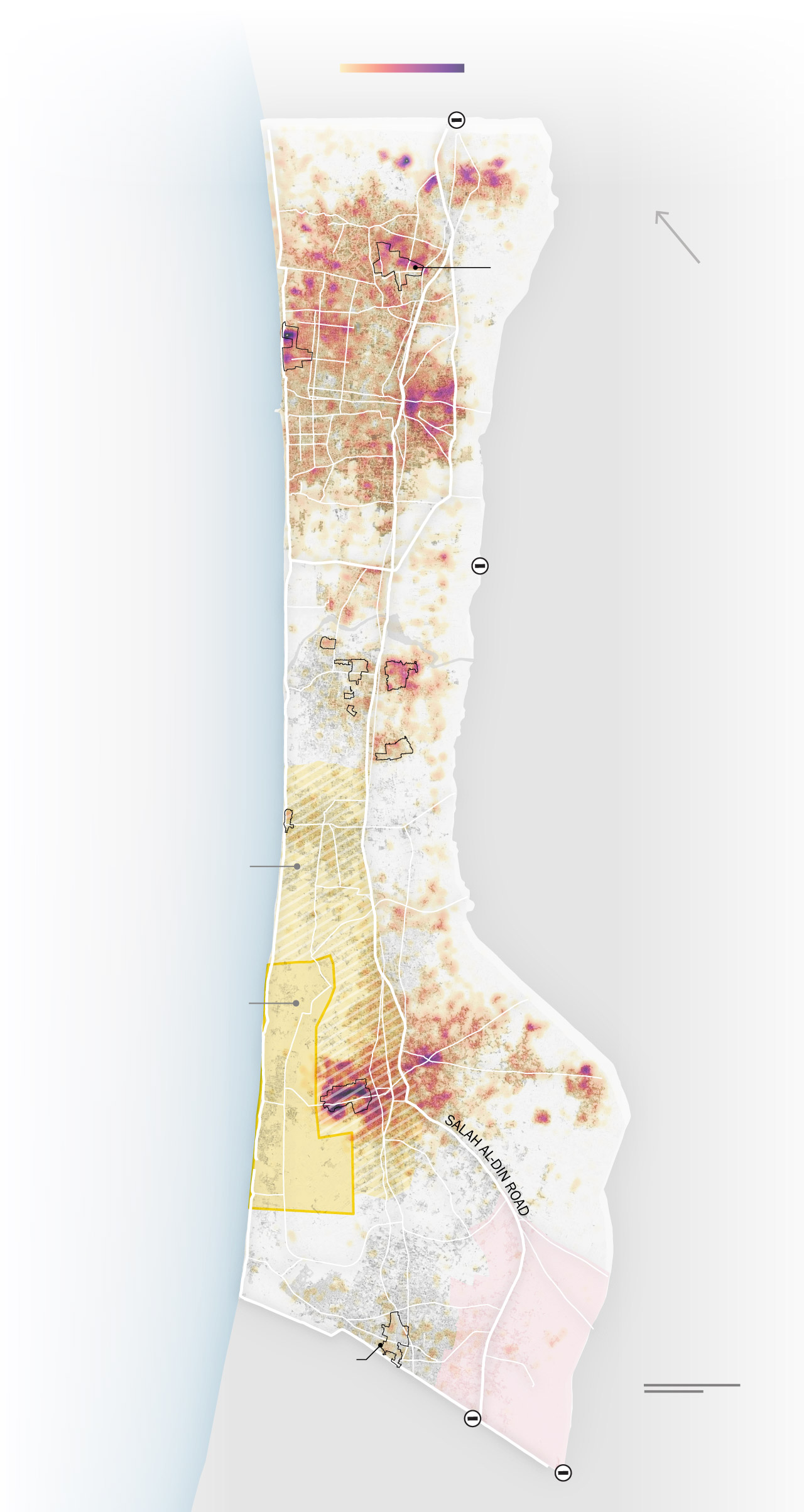
Density of damage based on satellite imagery
as of Feb. 29
Moderate
Destroyed
Erez crossing
Beit Hanoun
Beit Lahiya
NORTH
Jabalya camp
Jabalya
Shati
camp
Gaza
City
ISRAEL
Mediterranean
Sea
Gate 96:
Israeli controlled
entry point for aid
AL-RASHEED
STREET
Nuseirat
camp
Bureij
camp
Maghazi
camp
Deir al-Balah
camp
ISRAEL
IDF expanded
humanitarian
zone
Qarrara
IDF designated
humanitarian
zone
Khan
Younis
Bani
Suheila
Khan
Younis
camp
Mawasi
Tal al Sultan
camp
Rafah
Evacuation
zone
Rafah camp
2 MILES
2 KM
EGYPT
Rafah
crossing
Sources: UN OCHA,
IMPACT/UNOSAT and
OpenStreetMap
Kerem Shalom
commercial crossing
The red zone — the focus of Israel’s new operation — includes Al-Najjar hospital, which provides limited treatment for cancer, dialysis, pediatrics and emergency care.
Mhoira Leng, a palliative care provider who recently returned from volunteering at the hospital said in a statement that patients and workers there were already struggling to receive care. “The staff are living in tents with scarce access to food. Now, they are being forced to flee and move immovable patients out of the only hospital providing this care in Gaza.”
The zone also includes two major entry points for aid into Gaza: Rafah crossing and Kerem Shalom crossing. Aid groups warned that this could be disastrous for the humanitarian efforts in the enclave.
“Rafah is currently the central hub of all humanitarian operations and a lifeline for aid to enter Gaza,” McKenna said. “An offensive will cause the humanitarian response — already impeded by extremely limited access, onerous border checks, and the destruction of vital infrastructure from roads to warehouses — to collapse.”
The zone also encompasses a large segment of Rafah’s agricultural land. Fighting there could further hamper Gaza’s ability to produce its own food.
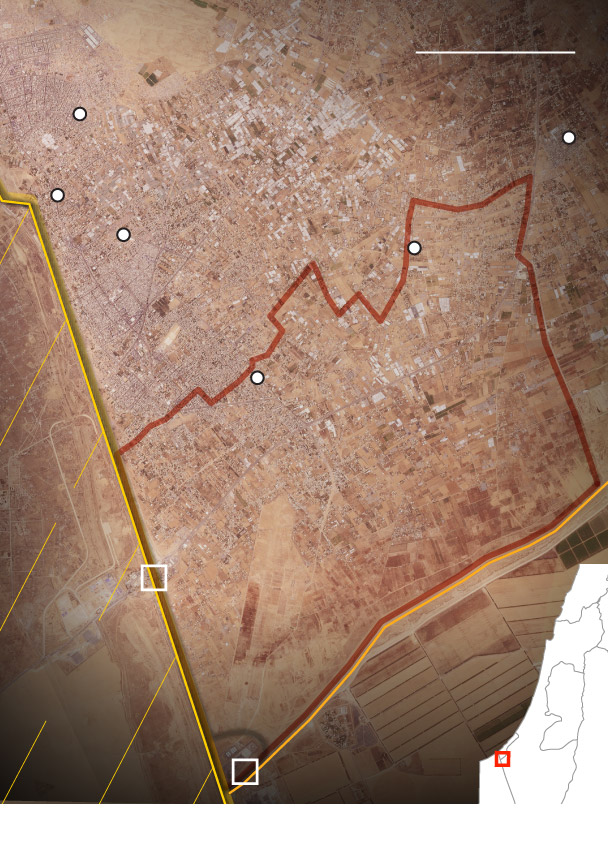
1 MILE
Tal al-Sultan
camp
European
Hospital
Maternity Hospital
Rafah
al-Najjar Hospital
Kuwait Hospital
Rafah
camp
al-Buyuki
Salah al-Din
Road
al-Najarr
Hospital
EVACUATION ZONE
al-Bayuk
EGYPT
GAZA
Rafah border
crossing
ISRAEL
Egyptian
buffer
zone
Kerem Shalom
crossing
Satelitte image via Planet Labs PBC
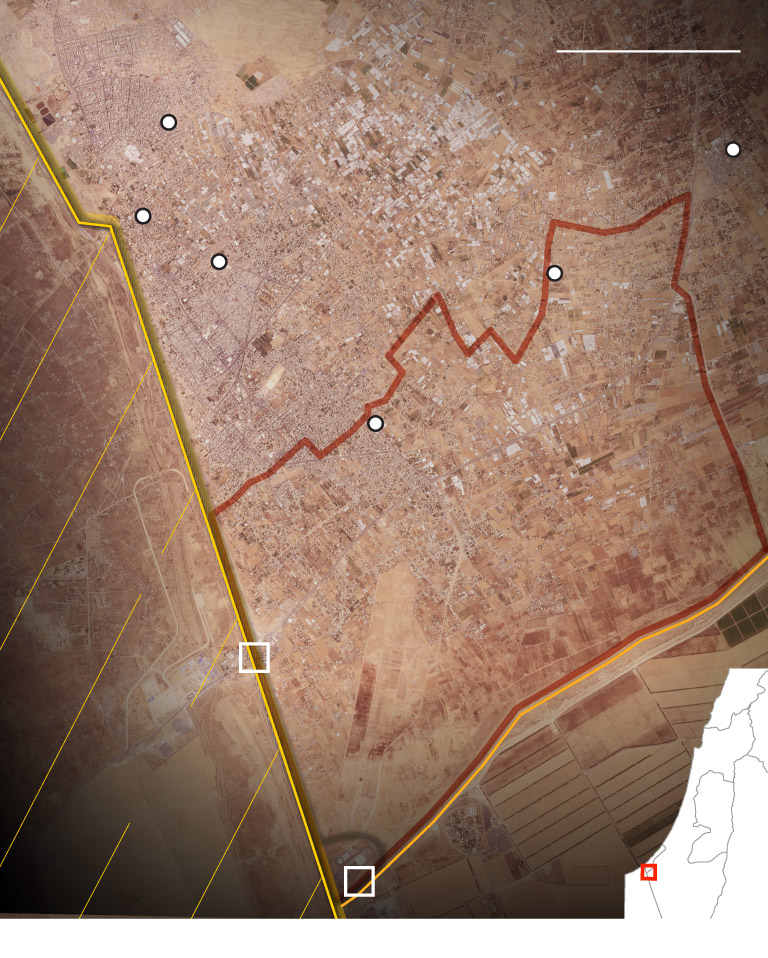
1 MILE
Tal al-Sultan
camp
European
Hospital
Maternity Hospital
Rafah
al-Najjar Hospital
Kuwait Hospital
Rafah
camp
al-Buyuki
Salah al-Din
Road
al-Najarr
Hospital
EVACUATION ZONE
al-Bayuk
EGYPT
GAZA
Rafah border
crossing
ISRAEL
Egyptian
buffer
zone
Kerem Shalom
crossing
Satelitte image via Planet Labs PBC
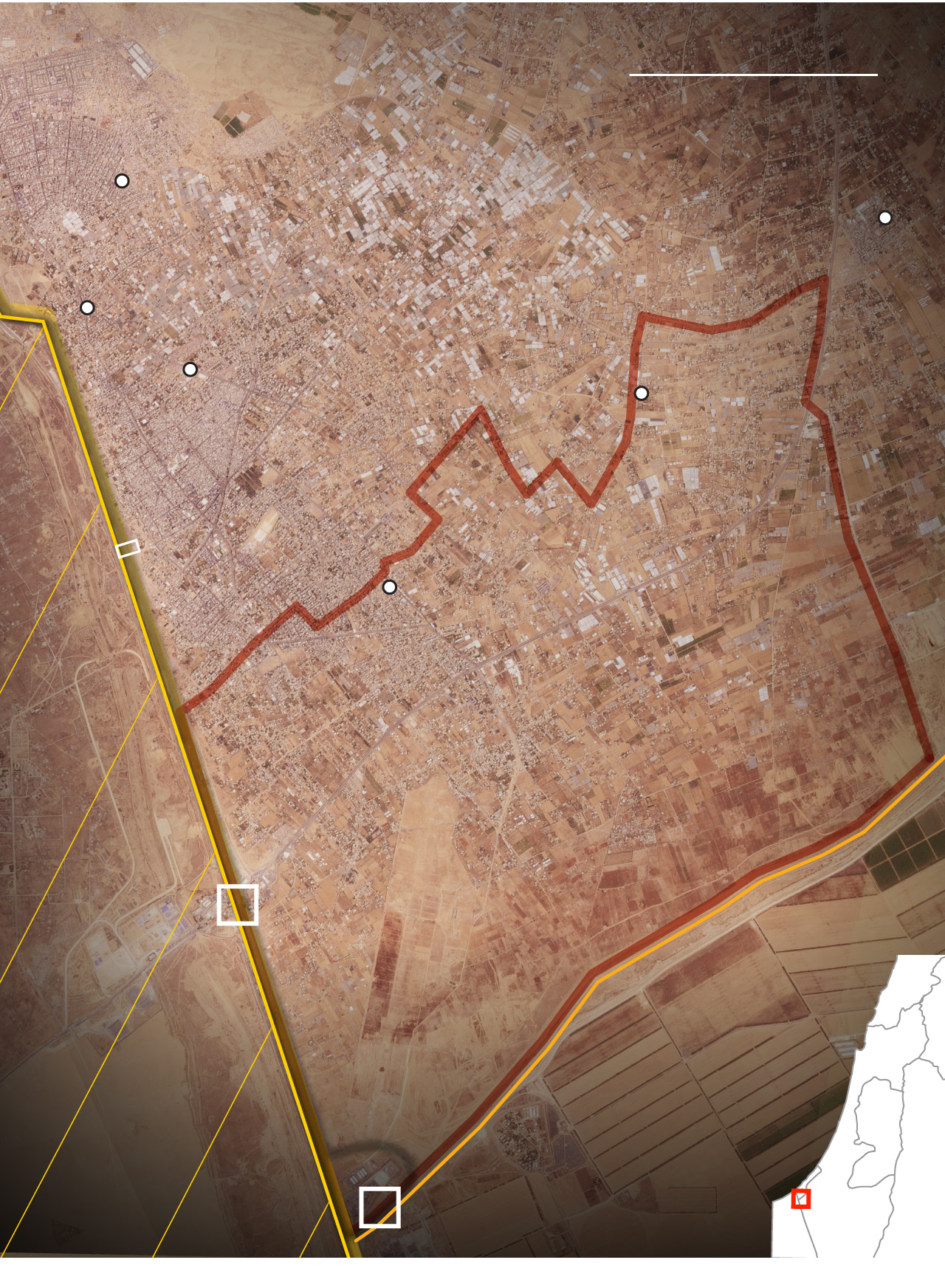
1 MILE
Tal al-Sultan camp
al-Helal al-Emirati Maternity Hospital
European
Hospital
Umm al-Kameil
al-Najjar Hospital
Umm al-Kilab
Kuwait Hospital
Rafah
al-Nasser
Med. Center
Khirbat
al-Adas
Rafah camp
al-Buyuki
Salah
al-Din gate
Salah al-Din Road
al-Najarr Hospital
EVACUATION ZONE
EGYPT
al Bayuk
GAZA
Rafah border
crossing
ISRAEL
Gaza International Airport
(Closed since 2002)
Egyptian
buffer
zone
Kerem Shalom
(Kibutz)
Kerem Shalom
(Crossing)
Satelitte image via Planet Labs PBC
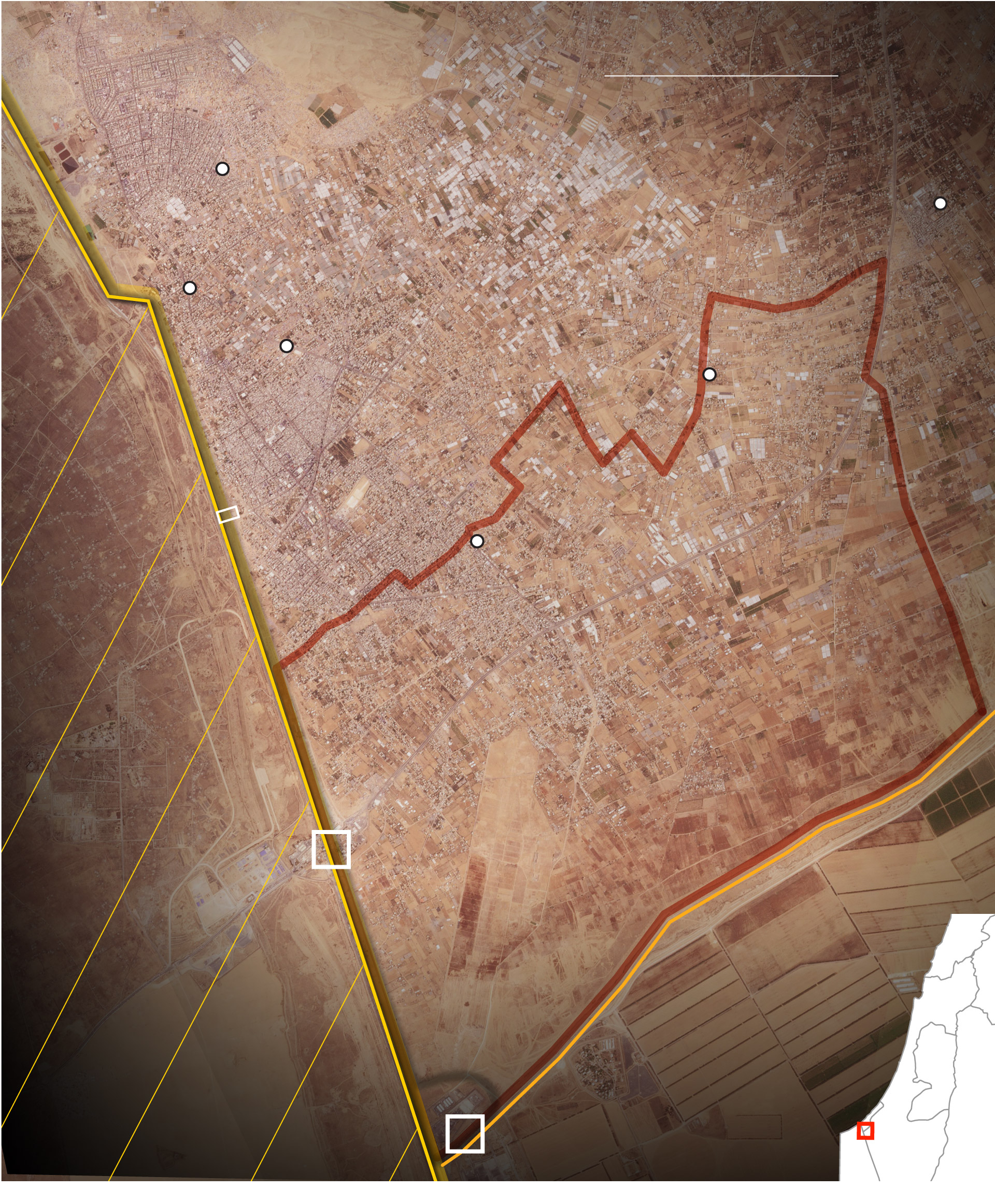
1 MILE
Tal al-Sultan camp
al-Helal al-Emirati Maternity Hospital
European Hospital
Umm al-Kameil
al-Najjar Hospital
Umm al-Kilab
Kuwait Hospital
Rafah
Egyptian
buffer
zone
al-Nasser
Medical Center
Khirbat
al-Adas
Rafah camp
al-Buyuki
Salah
al-Din gate
Salah al-Din Road
al-Najarr Hospital
EVACUATION ZONE
Salah al-Din Road
al-Bayuk
EGYPT
GAZA
Rafah border
crossing
ISRAEL
Gaza International Airport
(Closed since 2002)
Egyptian
buffer
zone
Kerem Shalom
(Kibutz)
Kerem Shalom
(Crossing)
Niha Masih, Lior Soroka, Annabelle Timsit and Cate Brown contributed to this report.



